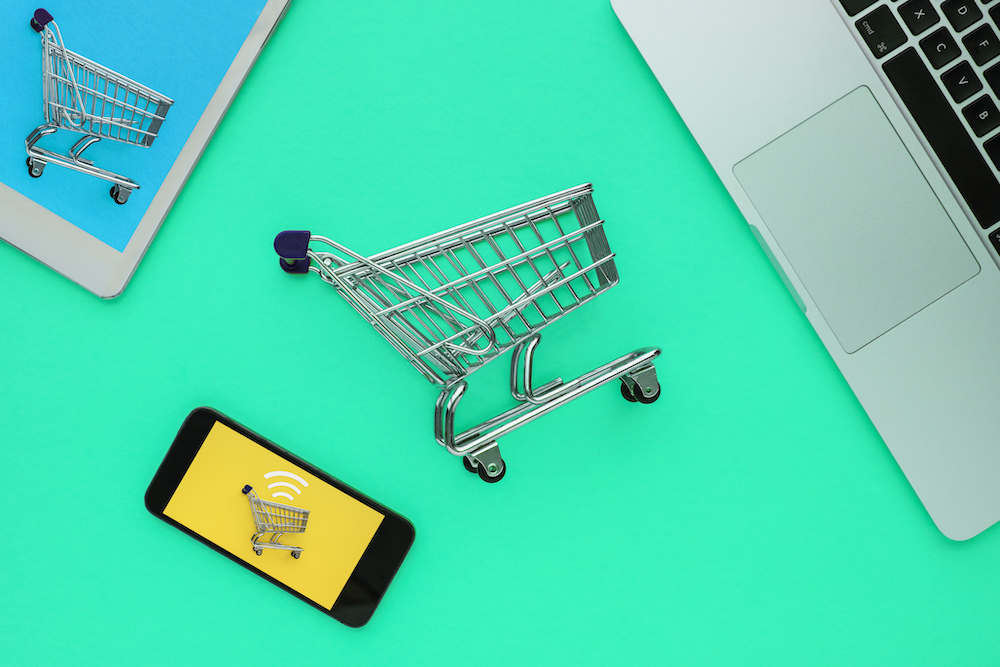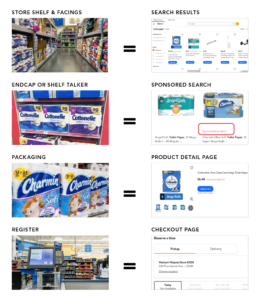

eCommerce was already accelerating before, but COVID-19 has sent it into hyperdrive. Online grocery sales grew 100% since the start of March and buy-online-pickup-in-store orders have increased 62% year over year, according to Adobe Analytics. This increase in digital ordering isn’t likely to subside anytime soon as options to shop physical retail remain limited and consumers become used to ordering online. Brands must prioritize eCommerce investment now — or risk missing a huge opportunity to win loyalty with these newfound digital shoppers.
Start managing your digital shelf like your physical shelf
Physical retail isn’t going away, but more than ever you must strengthen your digital retail execution.
Here is a basic framework for understanding where to focus.
-
- DISCOVERY: Search is the digital equivalent of the shelf. Make sure your products appear on the first page (page 1) when shoppers search for category terms (“toilet paper”), more so than your competitors’ products.
- AWARENESS: By sponsoring search keywords or buying display ads on retailer sites, you can get your products noticed over competitors, creating the effect of an endcap or shelf talker in the physical store.
- CONSIDERATION: Your product page is the digital equivalent of your shelf facing and packaging — used to communicate price and build trust via images, benefit copy and reviews. Make sure your pages are optimized.
- CHECKOUT: Online shoppers can have products delivered or pick them up at the store, the same day. Track out-of-stock rates to make sure shoppers can get your products when they need them.
Don’t think online and offline are the same. They are not.
While there are similarities between the digital and physical path to purchase, there are many structural differences that are important to understand.
- Digital retail moves at a much faster pace of change than brick & mortar. Your pricing, search position and out-of-stock rates can fluctuate in real time requiring daily monitoring and an organizational structure that can react and adapt quickly. Your teams must “always be on.”
- Artificial Intelligence often determines price and position, versus human vendor managers. This often gives you more control over your destiny. For example, by altering your content to include certain keywords, you can earn higher placement on retailer websites. It also means that there are no safeguards to protect price drops, so watch pricing closely.
- There are no barriers to entry, making digital aisles endless. It’s not uncommon online to compete against thousands of products and many brands you have never heard of, especially on Amazon. Getting your brands to stand out is a constant battle requiring budget for sponsored search ad campaigns and tools to help you optimize your efforts.
So what? Now What? Your critical action checklist
Things are moving fast, and you only have so many resources. Here’s where your teams should be focusing right now:
JOB FUNCTION |
PRIORITY ACTION |
| Sales / Key Account Teams |
|
| Marketing |
|
| Marketing & Customer Service |
|
For more eCommerce insights, contact Profitero or visit www.profitero.com


























